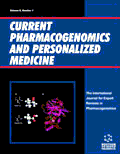
Full text loading...
We use cookies to track usage and preferences.I Understand
Type 2 Diabetes Mellitus (T2DM) has been a severe public health issue worldwide for many years. The primary cause and risk factor of T2DM is hereditary and complicated interaction between epigenetics. Identification and understanding of genetic markers may help to detect, prevent, and manage T2DM. This review examined the effect of single-gene and gene-gene interactions for predicting diabetes mellitus. Based on the literature survey, common and unique Single Nucleotide Polymorphisms (SNPs) and genes were explored in the Indian Populations, including PPARG, TCF7L2, KCNJ11, CDKN2A, IGF2BP2, SLC30A8, HHEX and CDKAL1. Identifying common and specific markers may help in risk prediction and early detection of T2DM. Future research and Genome-wide association studies are also required to predict the gene-gene interaction, generate large data sets for removing non-representative groups, and focus only on specific marker-associated traits.

Article metrics loading...

Full text loading...
References


Data & Media loading...

